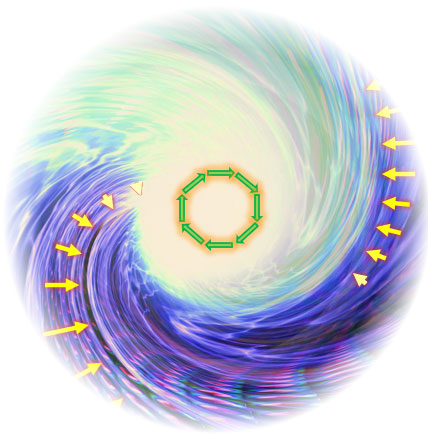Join us for a FREE Webinar
Optical Vortices and Their Interactions
Tuesday, April 25, 2023 10:00 AM - 11:00 AM EDT
|
|
|

|
Since the earliest theories and subsequent experiments, the study of optical vortices has delivered striking challenges to the way scientists traditionally think of light. Optical vortices are beams of light whose properties undermine many of the standard textbook descriptions of optical polarization and wavefront. The applications of such beams, which are also known as twisted light, have quickly grown beyond expectations. Such applications now range from chiral spectroscopy and microrheology to biological sensing and quantum communication.
David Andrews, Ph.D., provides a broad introduction to optical vortices, concisely explaining the key experimental methods and theory. He also shares the principles that determine the unusual features of optical vortex interactions with matter. At the quantum level, simple symmetry principles explain a range of novel effects, while in the broader fields of singular optics and structured light, topology is more relevant. Some of the latest studies reveal especially striking phenomena at the focal point of vortex beams. Despite optical vortices’ simple basis, the field is one in which wave optics, quantum theory, and symmetry can all reveal their distinctive effects in straightforward experiments.
Who should attend:
Engineers and R&D scientists interested in learning more about optical vortices and their applications. Those working in spectroscopy, rheology, biophotonics, optical communications, and quantum research who would like to gain a further understanding of how twisted light can be applied.
About the presenter:
David L. Andrews is professor at the University of East Anglia (UEA) in Norwich, England. After graduating from University College London with a Bachelor of Science degree in chemistry, a doctorate in theoretical chemistry, and following postdoctoral research in the Department of Mathematics, he moved to a lectureship at UEA, gaining a personal chair in 1996. Andrews’ group is known for developing quantum electrodynamical theory for a wide range of optical phenomena, including optical manipulation, multiphoton spectroscopy, nonlinear optics, chirality, and the interactions of structured light. His group pioneered the now widely applied unified theory of energy transfer and made predictions of chiral effects in harmonic scattering, eventually proven by experiment 40 years later. Andrews is the author of over 400 papers and is author or co-editor of more than 20 books. The books include The Angular Momentum of Light, Molecular Photophysics and Spectroscopy, Optical Nanomanipulation, Introduction to Photon Science and Technology, and Structured Light for Optical Communication, as well as multivolume series on photonics and on nanoscience and technology. Andrews is a fellow of Optica, the Institute of Physics, the Royal Society of Chemistry, and of SPIE, the international society for optics and photonics, where he served as 2021 president.
|
|
|
|
Date: Tuesday, April 25, 2023
Time: 10:00 AM - 11:00 AM EDT
Space is limited. Reserve your Webinar seat now at: https://attendee.gotowebinar.com/register/982930839418815839?source=eblast
After registering you will receive a confirmation email containing information about joining the Webinar.
|
|
|
SYSTEM REQUIREMENTS
Operating System
Windows® 7 or later, Mac OS® X 10.9 or later, Linux®, Google ChromeTM OS
AndroidTM OS 5 or later, iOS® 10 or later
Web Browser
Google ChromeTM (most recent 2 versions)
Mozilla Firefox® (most recent 2 versions)
Mobile Devices
AndroidTM 5 or later
iPhone® 4S or later
iPad® 2 or later
Windows Phone® 8+, Windows® 8RT+
|
|
|
|
.: More from Photonics Media
|
|
|
|